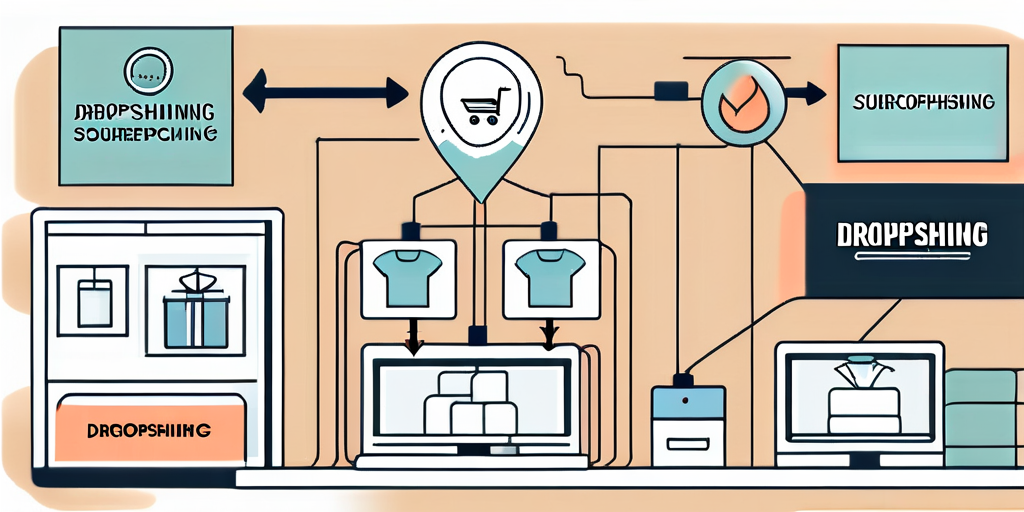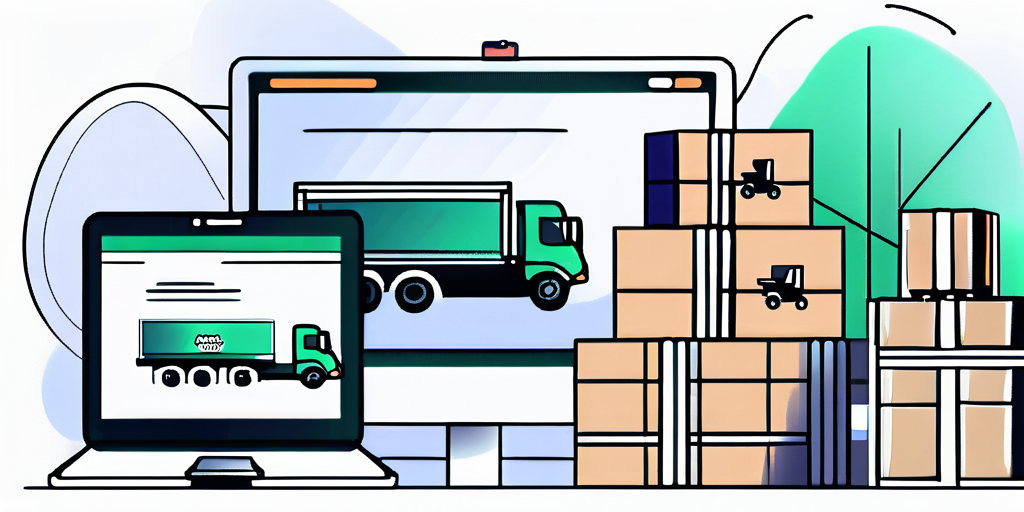Dropshipping has emerged as a popular business model in the world of e-commerce. It offers entrepreneurs the opportunity to start their own online store without the hassle of managing inventory or shipping. In this comprehensive guide, we will delve into the concept of dropshipping, explore its mechanics, discuss its advantages and challenges, and provide step-by-step instructions on how to start a dropshipping business. Whether you are a budding entrepreneur or an established business owner looking to expand your operations, this guide will equip you with all the information you need to succeed in the world of dropshipping.
Understanding Dropshipping: An Overview
Before we dive deep into the mechanics of running a dropshipping business, let’s first understand the concept of dropshipping itself. At its core, dropshipping is a retail fulfillment method where the store doesn’t keep the products it sells in stock. Instead, when a store sells a product, it purchases the item from a third party and has it shipped directly to the customer. This means that the store never actually handles the product, which helps eliminate the need for inventory management and fulfillment logistics.
The Concept of Dropshipping
The concept of dropshipping revolves around the idea of acting as a middleman between the customer and the supplier. As a dropshipper, your main responsibility is to market and sell products on your online store. When a customer places an order, you forward that order to the supplier, who then fulfills and ships the product directly to the customer. This eliminates the need for you as the store owner to handle inventory, package products, or manage shipping logistics, allowing you to focus solely on marketing and customer service.
The Role of Dropshipping in E-commerce
Dropshipping plays a crucial role in the e-commerce ecosystem, enabling entrepreneurs to start their own online businesses with minimal upfront investment. It provides a low-risk entry point into the world of retail, allowing individuals to test the market and validate their business ideas without the need to invest in large quantities of inventory. As the popularity of dropshipping has grown, so too has the number of platforms and tools available to support aspiring dropshippers, making it increasingly accessible to individuals of all backgrounds and experience levels.
One of the key advantages of dropshipping is the flexibility it offers. Unlike traditional retail models, where you are tied to a specific location and limited by the physical space of your store, dropshipping allows you to operate your business from anywhere in the world. As long as you have a reliable internet connection, you can manage your online store, communicate with suppliers, and serve customers from the comfort of your own home or while traveling the globe.
Moreover, dropshipping opens up a world of possibilities when it comes to product selection. With a traditional retail store, you are often limited by the physical space available to display and store products. However, with dropshipping, you can offer a wide range of products without worrying about storage constraints. This means that you can constantly update and expand your product offerings to keep up with the latest trends and meet the evolving demands of your customers.
The Mechanics of a Dropshipping Business
Now that we have a solid understanding of what dropshipping is, let’s delve into the mechanics of running a dropshipping business.

Running a dropshipping business involves a carefully orchestrated process that ensures smooth operations and customer satisfaction. It all begins with the selection of a niche and the creation of an online store. This is where your creativity and strategic thinking come into play. You must carefully curate a collection of products that cater to a specific target audience, ensuring that your store stands out from the competition.
Once your online store is set up, the next step is to find reliable suppliers who offer products that align with your chosen niche. This is a critical aspect of dropshipping, as the quality and reliability of your suppliers directly impact the success of your business. It is essential to establish strong relationships with these suppliers, as they will be responsible for fulfilling and shipping customer orders. Building trust and open communication channels with your suppliers will ensure that you can rely on them to deliver products promptly and maintain consistent quality.
When a customer purchases a product from your store, you simply forward the order details to the supplier, who then handles the packaging and shipping process. This streamlined approach eliminates the need for you to hold inventory or worry about the logistics of shipping. Instead, you can focus on what you do best ��� marketing and growing your business.
Throughout this entire process, you maintain control over pricing, marketing, and customer service, allowing you to build a unique brand identity. Your pricing strategy should consider factors such as product costs, competition, and market demand. Effective marketing techniques, such as social media advertising and search engine optimization, can help drive traffic to your store and increase sales. Additionally, providing exceptional customer service is crucial for building a loyal customer base and generating positive reviews and referrals.
Key Players in a Dropshipping Business
In a dropshipping business, there are several key players involved. As the store owner, you play the role of the retailer, responsible for creating an appealing online store, marketing products, and providing customer support. Your role is vital in shaping the overall customer experience and ensuring that your brand leaves a lasting impression.
The supplier, on the other hand, is responsible for manufacturing or sourcing the products, warehousing inventory, and fulfilling customer orders. They are the backbone of your dropshipping business, ensuring that the products you offer meet quality standards and are delivered to customers in a timely manner. Choosing reliable suppliers who share your commitment to customer satisfaction is crucial for long-term success.
Finally, the customer is the end recipient of the products and plays a crucial role in driving your business’s success. By providing an exceptional shopping experience, you can turn customers into brand advocates who not only make repeat purchases but also recommend your store to others. Understanding your customers’ needs and preferences and tailoring your product offerings and marketing strategies accordingly will help you build a loyal customer base and foster sustainable growth.
Advantages of Running a Dropshipping Business
There are numerous advantages to running a dropshipping business, which have contributed to its popularity among entrepreneurs. Let’s explore some of the key advantages:

Low Startup Costs
One of the most significant advantages of dropshipping is the low upfront investment required to start a business. In a traditional retail model, entrepreneurs need to invest in inventory upfront, which can be a significant financial burden. Dropshipping eliminates this requirement, allowing individuals to start their businesses with minimal capital. With the majority of costs being associated with building and marketing your online store, dropshipping offers a cost-effective way to enter the world of e-commerce.
Flexibility and Scalability
Dropshipping offers unparalleled flexibility, allowing entrepreneurs to run their businesses from anywhere in the world. With no physical products to handle, you have the freedom to operate your business from the comfort of your home or while traveling. Additionally, dropshipping is highly scalable, as you can add or remove products from your store without the need for additional storage space. This flexibility and scalability make dropshipping an ideal option for those looking for a business model that can adapt to their lifestyle and growth goals.
Challenges in Dropshipping Business
While dropshipping has its advantages, it is essential to be aware of the challenges that come with running a dropshipping business.

Supplier Issues and Risks
One of the key challenges in dropshipping is finding reliable suppliers. As a dropshipper, you are dependent on the supplier to fulfill customer orders promptly and accurately. If the supplier fails to deliver on their promises, it can result in delayed shipments, damaged products, or even customer dissatisfaction. It is crucial to conduct thorough research and establish strong relationships with suppliers to mitigate these risks and ensure a smooth order fulfillment process.
Customer Service Challenges
As a dropshipper, you are responsible for providing top-notch customer service, even though you don’t handle the product directly. This can present unique challenges, as you need to effectively address customer inquiries, handle returns, and resolve any issues that may arise. Building a strong customer service system and maintaining open lines of communication with both customers and suppliers is vital in overcoming these challenges and maintaining customer satisfaction.
Steps to Start a Dropshipping Business
Now that we have explored the concept, mechanics, advantages, and challenges of dropshipping let’s discuss the essential steps to start your own dropshipping business:
Identifying a Niche
The first step in starting a successful dropshipping business is to identify a profitable niche. It is essential to choose a niche that aligns with your interests, as this will make it easier for you to market and understand the needs of your target audience. Conduct thorough market research to identify niches with high demand and low competition, allowing you to position your store effectively and cater to a specific customer base.
Finding Reliable Suppliers
Finding reliable suppliers is critical to the success of your dropshipping business. Look for suppliers who offer high-quality products, have a proven track record of on-time delivery, and are willing to work with dropshippers. Research and compare different suppliers, read reviews, and communicate directly with potential suppliers to ensure they meet your requirements.
Building an E-commerce Website
Once you have selected a niche and identified reliable suppliers, it’s time to build your online store. Choose a user-friendly e-commerce platform that allows you to create a visually appealing and easy-to-navigate website. Customize your store to reflect your brand identity, optimize product descriptions and images, and incorporate secure payment gateways to provide a seamless shopping experience for your customers.
By following these steps and leveraging the advantages of dropshipping while overcoming the associated challenges, you can build a successful dropshipping business and carve your niche in the world of e-commerce. With careful planning, dedication, and a keen understanding of your target audience, you can create a profitable online store that offers customers unique products and exceptional service.


